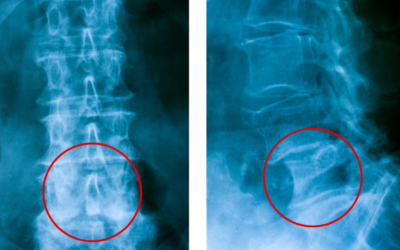How Your Desk Chair Can Cause Leg Circulation Problems
Patients are always asking me if their office chair may be causing leg circulation problems. I will give you some fantastic suggestions down below to help you if your office chair is actually causing leg circulation problems.
As a general rule, your chair can cause circulation problems. Individuals who spend large amounts of time sitting may be in danger of circulatory issues. Prolonged sitting, primarily with incorrect posture or sitting on the wrong type of seat may compress blood vessels in your leg muscles.
*This is my opinion as a chiropractor and seat designer.
But first, let’s look at the common symptoms of leg circulatory problems:
- Swelling, particularly around your ankles
- Dull or crampy pain in the leg(s)
- Tingling or Numbness sensation in the leg(s)
- Cramping in your leg muscles, particularly after activity
- Varicosities or pigmentation in the leg(s)
- Prone to the feet
- Coldness sensation, especially in the feet
All Day Comfort & Support
When You Should See a Doctor If You Think You Have Leg Circulation Problems:
While it’s common to get leg circulation trouble from sitting wrong, an improper chair for your body type, or even age, it is always a good idea to consult with a cardiac doctor if you observe any of the (above) symptoms. Remember, untreated circulation troubles could be a warning sign of an underlying serious condition and could potentially lead to greater complications.
Black Friday: 35% Off Today
Typical Delivery 1-3 Days
Four Simple Ways to Ensure Comfort and Proper Sitting Posture in an Office Chair:
- Seat Pan: To help reduce leg discomfort, it is important to ensure that the depth of the seat pan is suitable for your body. Ideally, when seated, there should be enough space to fit 3 fingers, roughly 4-5cm, between the edge of the chair and the back of the knees.
- Office Chair height and back tilt: Make sure that the office chair allows for easy adjustments to the seat height and backrest so that both feet are on the floor and the back can recline comfortably.
- Seat width: The seat width should be wide enough to comfortably fit the legs without any pressure points.
- Forward tilt: To promote proper sitting posture, it’s important that the hips are higher than the knees by a few centimetres. Most high-quality ergonomic office chairs have a forward tilt adjustment for this purpose. If your chair doesn’t have this option, consider using a seat wedge, with the wider part at the back of the seat.
Six Easy Methods to Improve Your Sitting Leg Circulation Posture:
- Sit with your body in a ‘neutral position. This means, when seated, your ears should line up with your shoulders and hips with both feet flat on the floor. When you lose your neutral posture (i.e. slouching forward), this behaviour shortens your spine and impedes circulation. In other words, there should be no space between your lower back and the chair.2 Always use your backrest for support.3
- Feet flat on the floor. If your legs are too short, use a footrest. It is a good idea to have your feet directly underneath or in front of your knees to avoid circulation problems around your knees. Also, please do not let your feet hang. Sitting with your legs crossed or with one foot tucked beneath your bum may interfere with your circulation.
- Try sitting on an angle. Finding a comfortable position while sitting can be tricky. To reduce pressure on your legs and backside, it’s important that you adjust the angle of your seat to make sure your hips are higher than your knees. I found with my patients that sitting at less than a 90 degree angle is often unsupportive in the long run and can cause your lower body to resist blood circulation properly. If possible, find a chair that allows for angled seating as this posture offers plenty of support and prevents resting in positions that put stifling pressure in difficult-to-reach areas.
- Move every 20 minutes. Movement induces your heart to pump harder and harder and enhances circulation.
- Use armrests. Armrests reduce stress in the blood vessels in and around your shoulders. Try to keep your arms moving throughout your day to promote better circulation.
- Never cross your legs. Crossing your legs may diminish circulation to your feet.
All Day Comfort & Support
Can You Reverse Bad Circulation?
Yes, bad circulation can be reversed and the easiest way to do this is by exercising. It doesn’t have to be three hours a day in the gym because as little as 30 minutes of walking can get the blood flowing again. A few common causes of bad circulation include sitting cross-legged and sitting or standing for too long at a time. The best thing to do is to keep your body moving all day long which in turn will keep your blood circulating.
How to Improve Leg Circulation
There are a few things you can do to improve circulation while sitting. The top of the list though is to not cross your legs while sitting down. It is a common habit of many people and a common cause of poor circulation. The rest is largely to do with your office chair. So, be sure to use a chair with a comfortable seat that has an easily adjustable backrest. Sit upright with the backrest supporting your body, place your feet flat on the floor or use a footrest if you cannot comfortably reach the floor. Always make sure to take breaks and arise from your seat and take a short walk to stretch your legs. A good rule of thumb is to move every 20 minutes. It doesn’t take much. In fact, the mere act of just standing up every 20 may be enough to get your blood flowing.
Are Recliners Good for Circulation?
If you spend a lot of time either standing or sitting during the day, using a well-designed recliner can bring much comfort while helping keep blood circulation flowing properly. Rather than fight against gravity, your body can relax as the curve of the recliner chair aids in naturally and gently increasing blood flow throughout the body. This lessens inflammation and resulting stress on your system since improved blood circulation causes muscles to relax.
I believe that the right recliner even comes with lumbar support to make sure your entire lower torso is comfortable. That said, it’s important to research and finds one that fits your needs perfectly – so take your time, sit back, and enjoy the benefits of a good quality recliner!
Black Friday: 35% Off Today
Typical Delivery 1-3 Days
Final Thoughts
I’ve worked with countless numbers of people, all of whom spend large amounts of time sitting to avoid potential dangers of circulatory issues with this advice that I imparted to you today. By implementing these simple changes to your work environment you should enjoy long-lasting beneficial effects. There are numerous factors that can cause circulatory problems from sitting at your desk.
The main reason is when you work at a desk they conform to the station rather than make the workstation accommodate you. You may lean forward to see the screen better; you may reach for your mouse or keyboard; cross your legs; have the wrong seat pan; sit on a hard seat; your seat is too low or don’t have a forward tilt control. By keeping an active and conscious posture throughout your day, you may be surprised how well you may feel.
Sources
- Musculoskeletal problems in VDT work: a review; J. B. CARTER &E. W. BANISTER;Pages 1623-1648 | Published online: 31 May 2007
- Effects of dynamic office chairs on trunk kinematics, trunk extensor EMG and spinal shrinkage;JHL Van Dieën, MP De Looze, V Hermans; Ergonomics – 2001
- Design and disease; P Van Wely – Applied Ergonomics, 1970 – Elsevier









